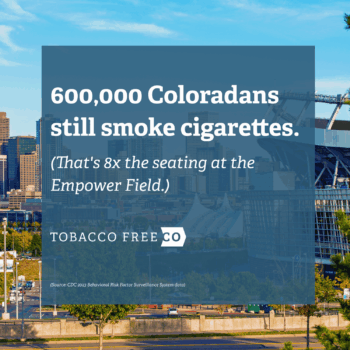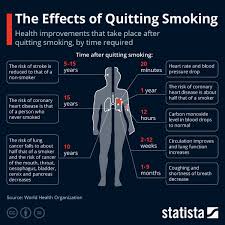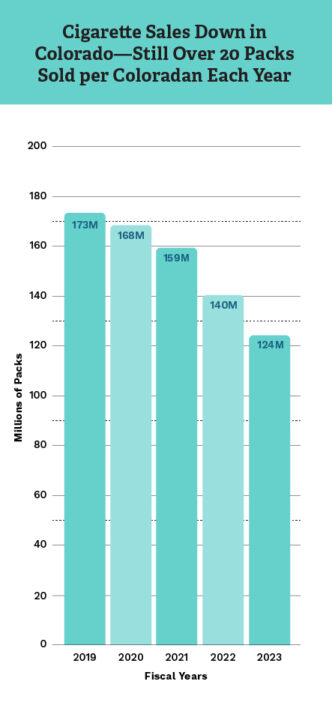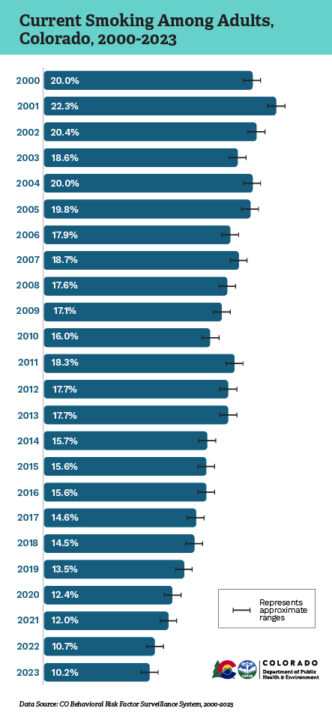It’s Still a Problem: Cigarettes Continue to Hurt Colorado
The latest headlines may focus on new types of nicotine products, but cigarette smoking remains a persistent and deadly public health challenge in Colorado.
According to the CDC 2023 Behavioral Risk Factor Surveillance System data, 10.2% of Colorado adults smoke cigarettes. That’s about 600,000 Coloradans.

Colorado Department of Revenue data shows cigarette sales declining in each of the five years starting with 2019. However, Colorado retailers still sold 124 million packs in 2023. That equals nearly 2.5 billion cigarettes. (Colorado Department of Revenue 2023 Annual Report)
According to the Centers for Disease Control and Prevention, smoking remains the leading cause of preventable death in the United States.
People who smoke lose an average of 10 years of life compared to those who never smoked. People who smoke daily also face a greater risk of developing conditions such as lung cancer, chronic obstructive pulmonary disease, heart disease, and stroke.
On one hand, declines in smoking are a great public health success story. On the other hand, there’s still much work to be done.
Secondhand smoke still reaches many Coloradans who do not use tobacco themselves. Research shows that even brief exposure to secondhand smoke can trigger asthma symptoms, raise heart disease risk, and worsen existing health conditions.
In shared spaces like apartment buildings, workplaces, and cars, secondhand smoke may be difficult to avoid for many Coloradans, including kids. While smoke-free laws help limit exposure, secondhand smoke still takes a toll on Coloradans.
Even as new tobacco products emerge, youth cigarette smoking persists. In Colorado, 17% of high school students report having tried a cigarette at least once, according to the 2023 Healthy Kids Colorado Survey. While this number reflects a significant decline from past generations, 3% of high school students smoked a cigarette in the past 30 days – that’s thousands of teens getting hooked on nicotine, the addictive chemical in cigarettes.
Cigarettes also remain visible in popular culture. Although traditional advertising channels are restricted, smoking increasingly appears in movies, television shows, and digital content. Studies suggest that onscreen smoking can influence how youth perceive tobacco, especially when used by lead characters or portrayed in a positive light.

Cigarette use does not affect all communities equally. Some groups in Colorado—such as people with low incomes, certain racial and ethnic groups, LGBT individuals, and people with behavioral health conditions—report higher smoking rates than the state average. These disparities reflect a long history of targeted marketing by Big Tobacco.
Efforts to reduce smoking in Colorado continue to save lives and protect health. State and local programs support people who want to quit, protect communities from secondhand smoke, and prevent youth from starting to smoke. These strategies include smoke-free housing policies, access to free nicotine replacement products, and media campaigns

(Source: Statista)
that share accurate information about risks.
Most people who smoke want to quit, and many succeed with the right support. Colorado offers free help through the Colorado QuitLine, which includes coaching, medication, and personalized quit plans. People who quit experience health improvements almost immediately, including better lung function and lower blood pressure.
Prevention also plays a key role. Keeping young people from starting in the first place prevents long-term nicotine addiction. Schools, families, and communities all play a role in shaping how youth view tobacco use and what support they have when facing pressure to try it.
Progress against smoking shows that prevention and cessation, or quit, support works. We have the playbook so Colorado can continue moving toward a healthier, smoke-free future.
Find Support and Take Action:
- Quit for good
- Protect yourself and others from secondhand smoke
- Help young people stay tobacco-free
- See who still faces the highest risk – explore the Protecting People pages

